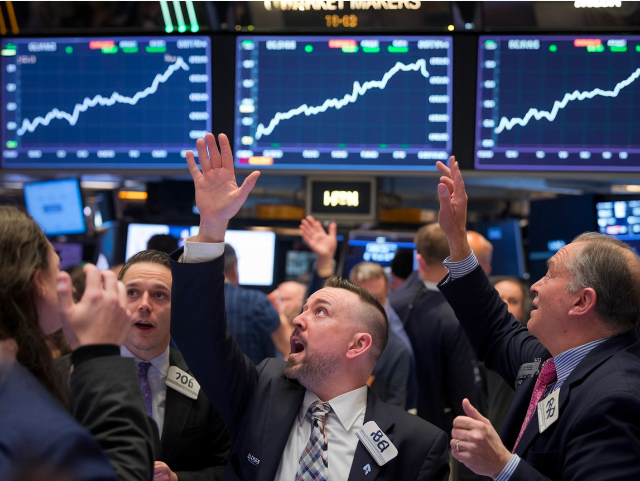News
Wall Street’s Market Rally Ends in Record Highs for Nasdaq, S&P 500 and Dow Jones

The stock market soared to new heights following a significant rate cut by the Federal Reserve on Wednesday, igniting a market rally across major indices. The half-point cut, the Fed’s first since the pandemic, exceeded investor expectations and spurred optimism about future economic growth. Investors celebrated this aggressive monetary policy move, sending stocks across multiple sectors higher.
Market Rally Results in Nasdaq, S&P 500 and Dow Hitting All-Time Highs
The S&P 500 closed at 5,700 on Thursday, surpassing its previous high of 5,600 reached in July. Meanwhile, the Dow Jones Industrial Average broke records by closing at 42,000 for the first time, up from its previous high of 41,700. The Nasdaq Composite also surged, adding 2.5% to push it beyond 15,500, surpassing its previous record of 15,200.
Investors cheered the rate cut, viewing it as a much-needed stimulus that could boost corporate profits and lift investor portfolios. This marked a significant recovery from the slight dip on Wednesday, when stocks wobbled in reaction to the Fed’s announcement. Optimism returned as investors digested the long-term benefits of lower interest rates, which reduce borrowing costs for companies and consumers alike.
Tech Titans Propel the Market Rally
The technology sector was the biggest beneficiary of the Fed’s rate cut. Nvidia saw a 4% increase in its stock price, while Tesla surged 7.4%, and Apple gained 3.7%. These gains were instrumental in pushing the Nasdaq past the 15,500 mark. Other major players, including Meta Platforms and Microsoft, posted significant gains, further contributing to the broader market rally.
The tech sector thrives on borrowing for research, development, and expansion, and lower interest rates create more favorable conditions for these activities. As a result, tech companies are expected to continue performing well if the Fed maintains its rate-cutting approach.
Financial and Small-Cap Stocks Also Surge
Financial stocks also reaped the benefits of the rate cut. Major institutions like JPMorgan Chase, Goldman Sachs, and Citigroup rallied as investors anticipated increased lending activity due to lower borrowing costs. The Russell 2000, which tracks smaller companies sensitive to economic changes, rose 1.8%, as smaller firms are expected to benefit from easier access to capital.
Historically, financial stocks have responded positively to rate cuts, as banks can lend more easily and boost their profits. Lower interest rates encourage businesses to take out loans, fueling growth and economic expansion.
Energy and Industrial Sectors Left in the Dust
Not all sectors shared in the market’s euphoria. The energy sector lagged behind, with ExxonMobil and Chevron showing only minimal gains. Lower oil prices and weakening global demand weighed heavily on energy stocks, leaving the sector underperforming compared to others. Industrial stocks like Caterpillar and 3M also posted only modest gains, reflecting concerns over long-term growth despite the immediate market rally.
Energy and industrial sectors often depend on global demand for commodities and infrastructure investments, which have faced uncertainty due to geopolitical tensions and a cooling economy. As a result, these sectors have struggled to keep pace with the broader market rally.
Despite Market Rally, Investors Eye the Future with Caution
While the Fed’s move bolstered markets, questions linger about the long-term sustainability of this rally. Jerome Powell, Fed Chair, cautioned that future rate cuts might not be as aggressive, and investors remain concerned about potential risks such as geopolitical instability and a softening labor market.
Lower rates are generally positive for businesses and stock investors, but there is an underlying concern that the Fed’s aggressive cuts signal potential future economic trouble. As companies report their earnings in the coming quarters, investors will be watching closely to see if the rally has staying power or if it’s a temporary response to monetary policy adjustments.
Will Wall Street’s market rally continue? Or should we expect a downward spiral anytime soon? Tell us what you think!



